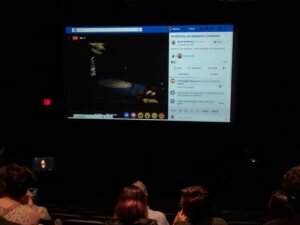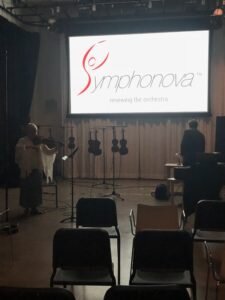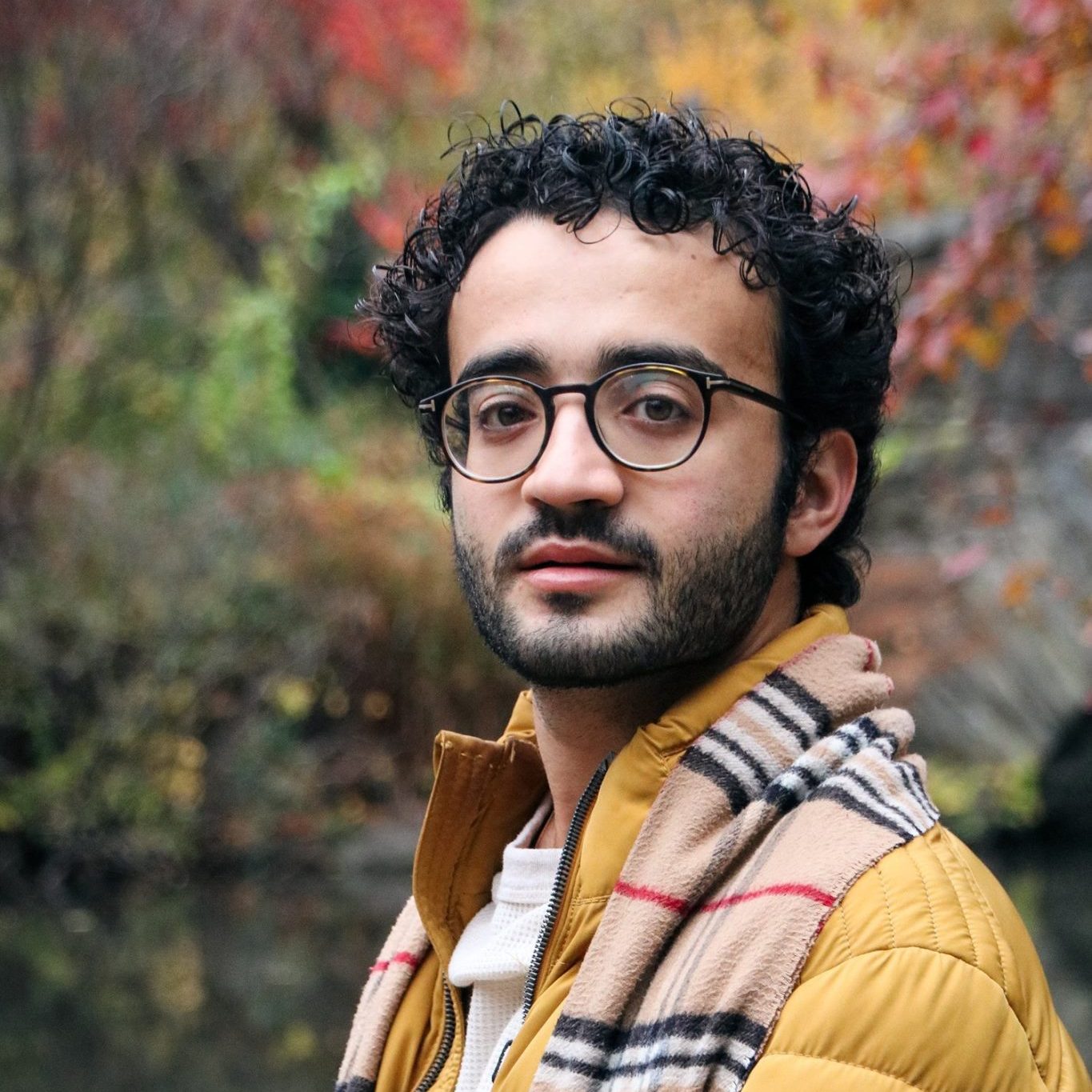How ‘foldA’ Harnessed Digital to Create Art and Open Dialogue
It is clear in today’s world that digital carries with it a power that can be harnessed to change and improve the efficiency and performance we hope to achieve as modern citizens of the 21st century. The power of technology, however, can also be harnessed to produce new works of art, which is what Michael Wheeler and the rest of the team at Spiderwebshow championed when embarking on the first ever Festival of Live Digital Art (foldA for short).
Based at the Isabel Bader Centre for the Performing Arts in Kingston, Ontario, the festival took place from June 19-22, 2018 and attracted notable names in Canadian theatre, including Brendan Healy (Former Artistic Director of Performing Arts in Brampton & Incoming Canadian Stage Artistic Director ) and Jillian Keiley (Artistic Director of the National Arts Centre’s English Theatre). Also, the festival’s efforts, and success, in recruiting a diverse array of Canadian artists is praiseworthy. As advertised on the official website, foldA provided opportunities for participants to see shows, talk about shows, and work with creators on their shows. This mandate manifested itself as such – there were performances that participants were able to go to in person or livestream online, and conversations regarding digital technology and the Canadian cultural landscape in which participants could listen and contribute if they so choose.

The performances broke away from the typical proscenium staging and instead took on new forms that called for different audience arrangements, with some calling for participants to walk around a space. Not all the performances provided were finished, polished and ready to be consumed by an audience ready to simply watch. In fact, it was quite the opposite. The foldA team had lined up shows that were in all stages of development: alpha, beta and golden. Shows in the alpha phase were in their earliest stages – ready for internal testing, but require audience feedback to spark the next stage of development. Beta shows were performances ready for public testing to refine the audience experience. Finally, shows that had the golden status were ready for production release, only subject to minor improvements and bug fixes.

Naturally, each performance integrated technology in some shape or form, and to different extents. In some, like the livestream of Jan Derbyshire’s Certified at the Citadel Theatre in Calgary, technology merely supported the work. In other words, the technology used was able to establish a connection between the work and the audiences that were not in the same physical space of the work. Other works, like Symphonova, integrated technology within the previously-established craft to enhance it. Here, creator and musician Shelley Katz developed software that works equally with all of his symphonic instruments to create a fuller, richer orchestral sound for his listeners. With this technology, Katz is not only able create the perfect acoustics for a concert in any location, but can also richen the sound of one instrument to make it sound like there is an entire section accompanying it. This, Katz suggests, will greatly increase accessibility to great classical music, as bands will now be able to tour these works with nearly-identical quality (when in the past this was not fiscally feasible). Finally, there existed works that, without the integration of technology, would not have been possible to create.
This idea, I think, is exemplified the most in Lisa Ravensbergen’s Citation. In this piece, the creator recorded an audio file that participants could directly download from SoundCloud onto their phones for free. The audio recording was an essay, or a collection of them. Then, participants would follow a path marked by red fabric, to which the creator would be directly speaking in the recording. The path was carved by landmarks about which the creator was speaking in the recording. Here, the work in digital form provided audiences with the optimal experience of the content. The performance’s experience would have been diminished if the performer were onstage speaking to the audience, as they would not have been able to present in front of the landmarks about which the performer is speaking. Another noteworthy example of form informing content would be the virtual reality experience of Mary’s Room; Jane’s Listing; Joey’s Gift by Electric Company Theatre.

Electric Company Theatre seeks to push theatrical conventions with new technology while preserving narrative, whereas others chose to put the primary focus on form. In conversation with representative from the Stratford Festival on their current tech-heavy show Coriolanus, Technical Director Elissa Horscroft suggests that the main purpose of tech in theatre is not about displaying an impressive feat of technology, but rather about integrating it into the story to elevate the storytelling and its effect on audiences. Speaking to this, it is fair to state that the works presented at foldA in need of improvement most are those that seem to have revolved around form (the technology used to disseminate the content), and less around the content itself. This is because if some aspect of the technology fails in the performance, it becomes much more noticeable to the audience since the technology is the main focus. Yet, as technology seems to advance and become more accessible, it is also fair to state that the integration of technology in these performances will become seamless enough so that the focus can then return, and stay, on the content.
In regards to its structure – with its alpha, beta and golden performances – foldA could be considered, and subsequently marketed as, a festival-incubator hybrid. In this model, participants would be made aware of the duality of their roles – half audience member solely responsible for enjoyable consumption of the golden performances, and half focus group members responsible for thoughtfully consuming the alpha and beta performances, then providing any relevant feedback to the creators right after the performance concludes so that it remains fresh in their minds. This structure would also open up opportunities for the festival to create partnerships with artists and companies that can help in the development process, including (but not limited to) software engineers, dramaturgs etc.

An appropriate and insightful supplement to the performances were the conversations had at foldA, which seemed to centre around digital technology’s place within the cultural landscape of Canada. The topics that were covered could all link back to ways in which theatre companies can use technology in their operations to better connect their audiences to the art (as opposed to focusing on the art itself). Here, participants of the festival were able to listen and participate in discussions about audio theatre in the form of podcasts, improving accessibility for disabled audience members, and how the Stratford Festival was able to use current technology artistically to create Coriolanus. Through their discourse, these conversations allowed participants to closely examine the ever-growing disruption that is technology in theatre, but also extending to other art forms. One particularly interesting question that arose throughout the festival was that of technology’s role in the current employment climate within the arts: does it create more jobs, or reduce the amount of existing jobs? Coriolanus, for example, is an example of how technology can increase employment as the technology needs engineers to create it and a whole crew to preserve and sustain its function. Symphonova, however, is a technology that could lessen the amount of jobs in symphonic performance; if a symphony can now recreate the sound of an entire section with one musician, perhaps it will no longer feel the need to employ their human musicians and redirect their budgeted labour funds elsewhere. Food for thought.
Outside of the programming, there are other aspects of the festival to consider including (but not limited to) logistics and outreach. The festival seemed to be an insider event populated with out-of-town participants, the majority of whom had personal relationships with the creators. As a new art festival with promise and momentum, it is sensible to want to engage the community in which the festival is taking place. I’m looking forward to seeing foldA increase community engagement at subsequent festivals. Also, the festival seemed to be understaffed. However, in their defense, this seems to be a common occurrence with any new venture (artistic or otherwise) and, in their praise, the team succeeded in making sure that all needs were and all issues were taken care of – all with a smile on their faces.
All in all, I would like to commend Michael Wheeler, Spiderwebshow, and the rest of the foldA team on job well done in pulling off the first ever Festival of Live Digital Art. Indeed, with the nature of technology, there were a lot of moving parts and unexpected hiccups that the team dealt with in a professional and inconspicuous manner. They also accommodated any accessibility or logistical issue with ease and grace. It still remains difficult to create a polished product of digital art or performance with today’s accessible technology, and the creators’ efforts in doing so are commendable. As foldA strategic plan continues to strengthen, and as technology in performance becomes more accessible (i.e. affordable), I am excited to see where foldA will go and what it will become.
P.S. you can check out more of Spiderwebshow’s work at www.spiderwebshow.ca
